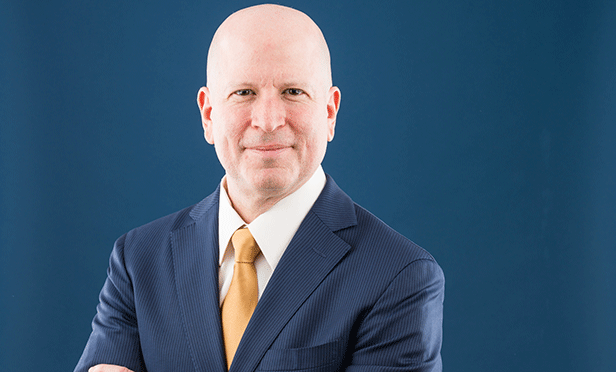Spectrum is no stranger to the multifamily sector. The firm started out as primarily an office building company and branched out with different divisions specializing in various property types. It started Spectrum Properties Residential Inc., a developer and acquirer of apartments, student housing and condominiums, seven years ago with Gray at the helm. After a five-year run, the firm took advantage of the then-hot investment market and liquidated that division's assets.
The latest initiative will focus on acquisitions since, as Gray tells it, "We believe that there will be an opportunity to acquire apartments and student housing properties at a substantial discount to replacement value during the next few years."
While Spectrum Properties Multifamily will buy some properties that are in physical or operational distress, most of them will involve highly leveraged borrowers who can't obtain refinancing on their maturing loans. "The idea is to buy assets at attractive pricing, manage them intensely for three to seven years, maximize their value and sell them at what will hopefully be a pretty handsome profit," says Gray. The holding period, he adds, will vary according to market conditions and yield expectations.
And because he believes multifamily will see a wave of demand over the next decade, he maintains that the asset class offers the best risk-adjusted return on all property types. "The largest generation of children under the age of 20 in US history will be entering the rental housing market in the next few years," notes Gray. "There are also virtually no new apartments being built today because it's so difficult to get a construction loan, which bodes well for the future balance of supply and demand. And it's more difficult than ever to qualify for a home mortgage now, so the homeownership rate will go from an all-time high of nearly 70% to around 62%, and the gap between those two figures consists of people who are going to need a place to live, including apartments."
Many of these same factors, he adds, apply to the student housing sector as well. "There will be some student housing properties for sale, where the assets are performing well operationally but the owners have to sell them in order to subsidize a problem somewhere else in their portfolios."
Over the next few years, the company will acquire mostly class A and class B properties of 200 to 350 units, as well as C-grade assets with value-add potential, in Alabama, the District of Columbia, Florida, Georgia, Indiana, Kentucky, Maryland, North Carolina, Ohio, South Carolina, Tennessee and Virginia. The average transaction size is expected to be $20 million to $30 million, but the firm prefers portfolios buys over one-off deals due to efficiencies of scale.
"I don't know that we'll continue to do acquisitions forever," Gray relates. "We're trying to take advantage of the buying opportunities in this down curve of the cycle, and it's hard to tell how long that's going to last. There will probably be a three-year window where buying opportunities will be out there--at the right price."
Spectrum is looking to team up with institutional partners who will provide the majority of the equity on the deals. The company will also kick in a share, and the balance will be met through traditional financing. Having multiple equity partners, explains Gray, provides greater flexibility in terms of investment. "Our objective is to have a couple of equity partners, since their needs, preferences and ability to invest vary from day to day," he says.
Right now, the firm is trying to raise $50 million to $100 million in equity. "We've had a lot of discussions with potential partners and we've narrowed it down to organizations that seem to have interests and objectives in common with us," says Gray. "Now we're in the second phase of putting together a mutually beneficial joint venture. When we get to that point, we'll be in a serious position to acquire assets."
And when it is ready to pick up assets, Gray knows the competition will be heavy. However, he maintains the company's strategy is such that successfully accumulating a portfolio won't be much of an issue. "With any good idea, there's going to be a lot of competition," he says. "But a smart person once told me, 'There's always room at the top.' So our intention is not to be the largest company in the country doing multifamily acquisitions. Our intent is to be a great boutique. We're not trying to be a department store or a chain of department stores. We'd like to acquire somewhere between 10 and 30 properties and hit a home run with each one of them."
Want to continue reading?
Become a Free ALM Digital Reader.
Once you are an ALM Digital Member, you’ll receive:
- Breaking commercial real estate news and analysis, on-site and via our newsletters and custom alerts
- Educational webcasts, white papers, and ebooks from industry thought leaders
- Critical coverage of the property casualty insurance and financial advisory markets on our other ALM sites, PropertyCasualty360 and ThinkAdvisor
Already have an account? Sign In Now
*May exclude premium content© 2025 ALM Global, LLC, All Rights Reserved. Request academic re-use from www.copyright.com. All other uses, submit a request to [email protected]. For more information visit Asset & Logo Licensing.








